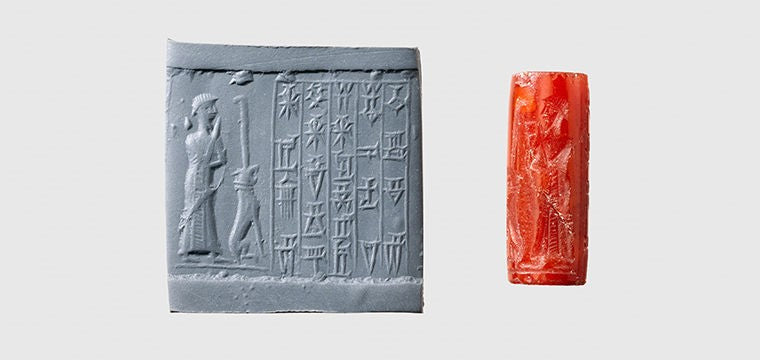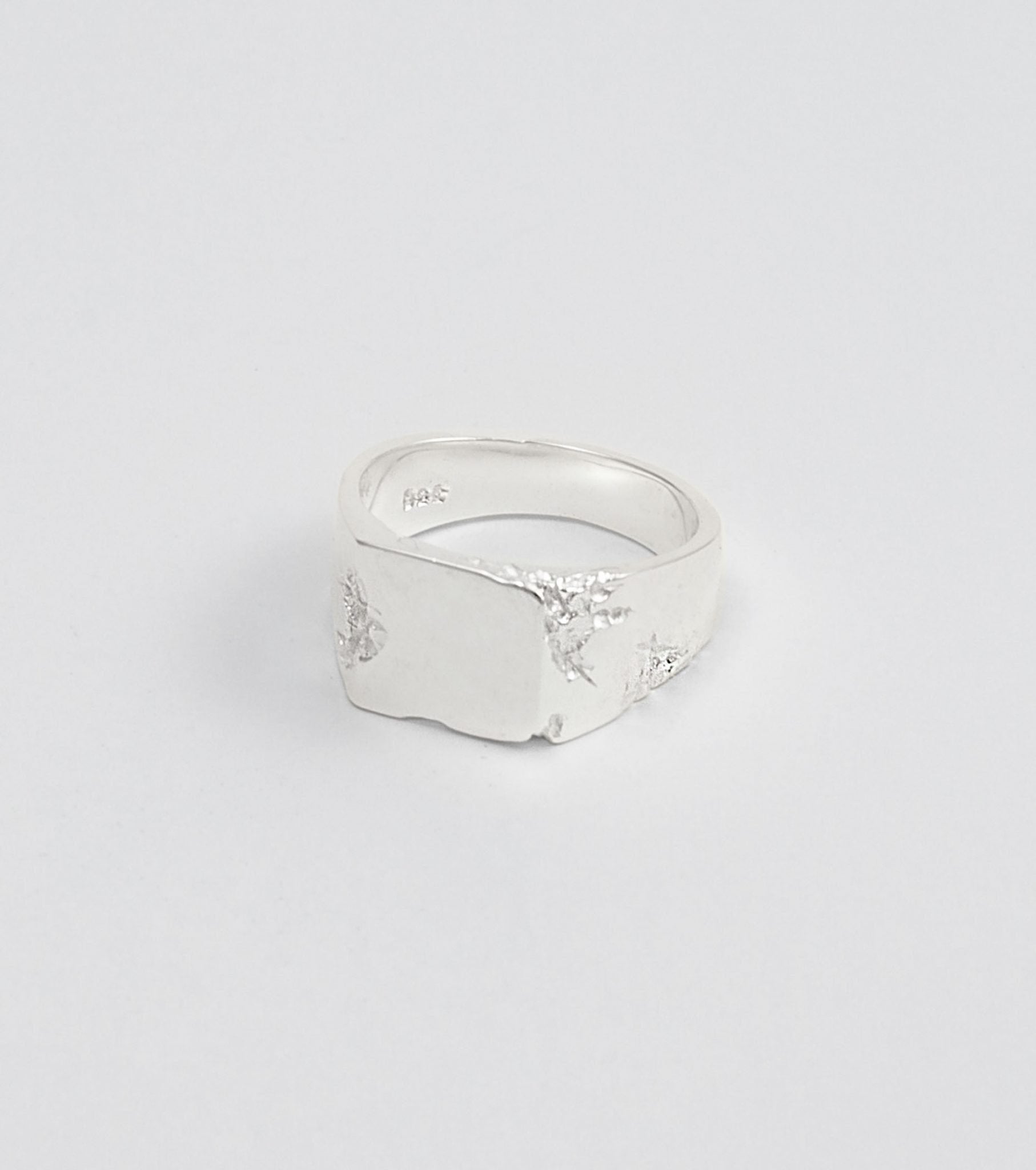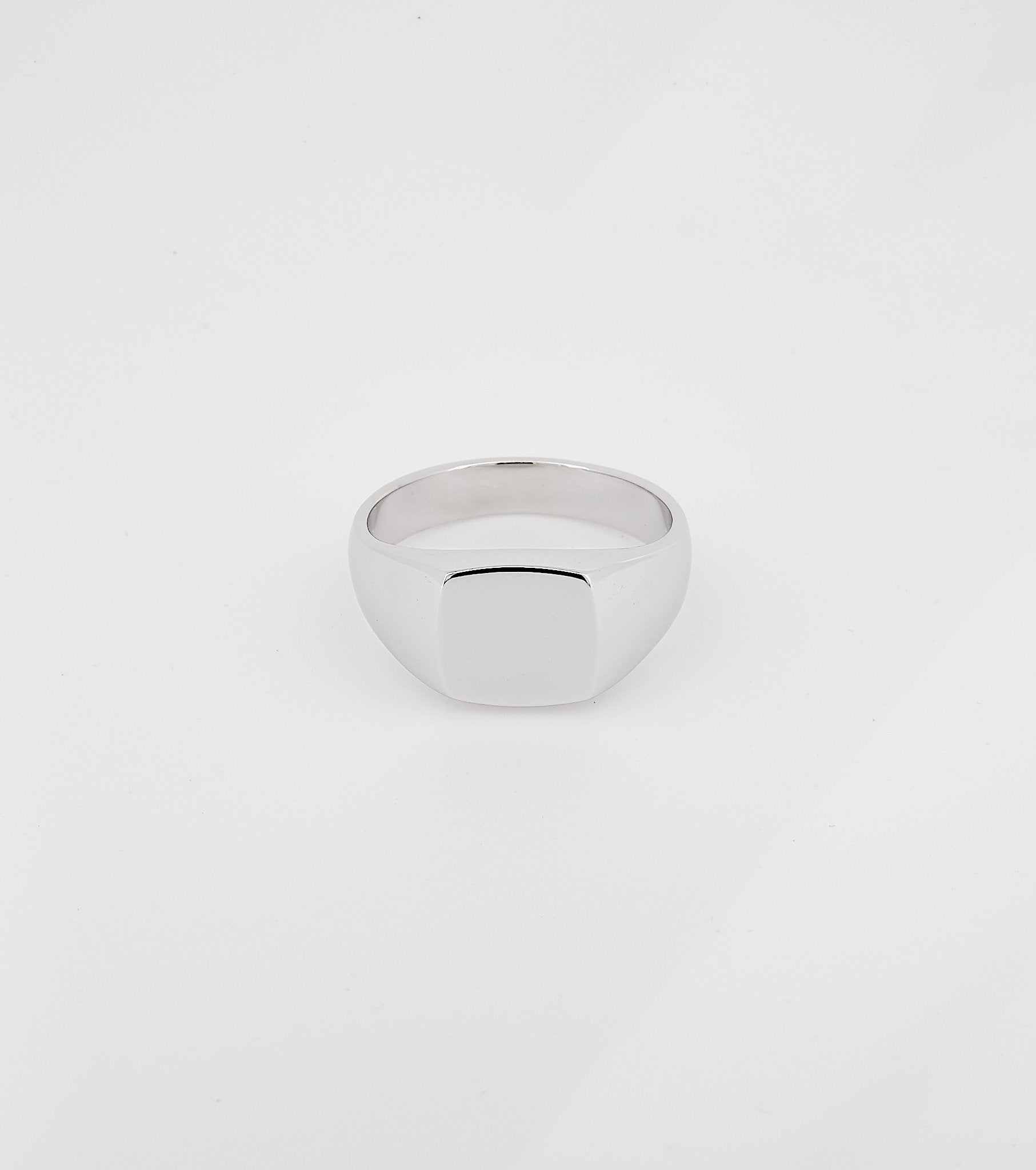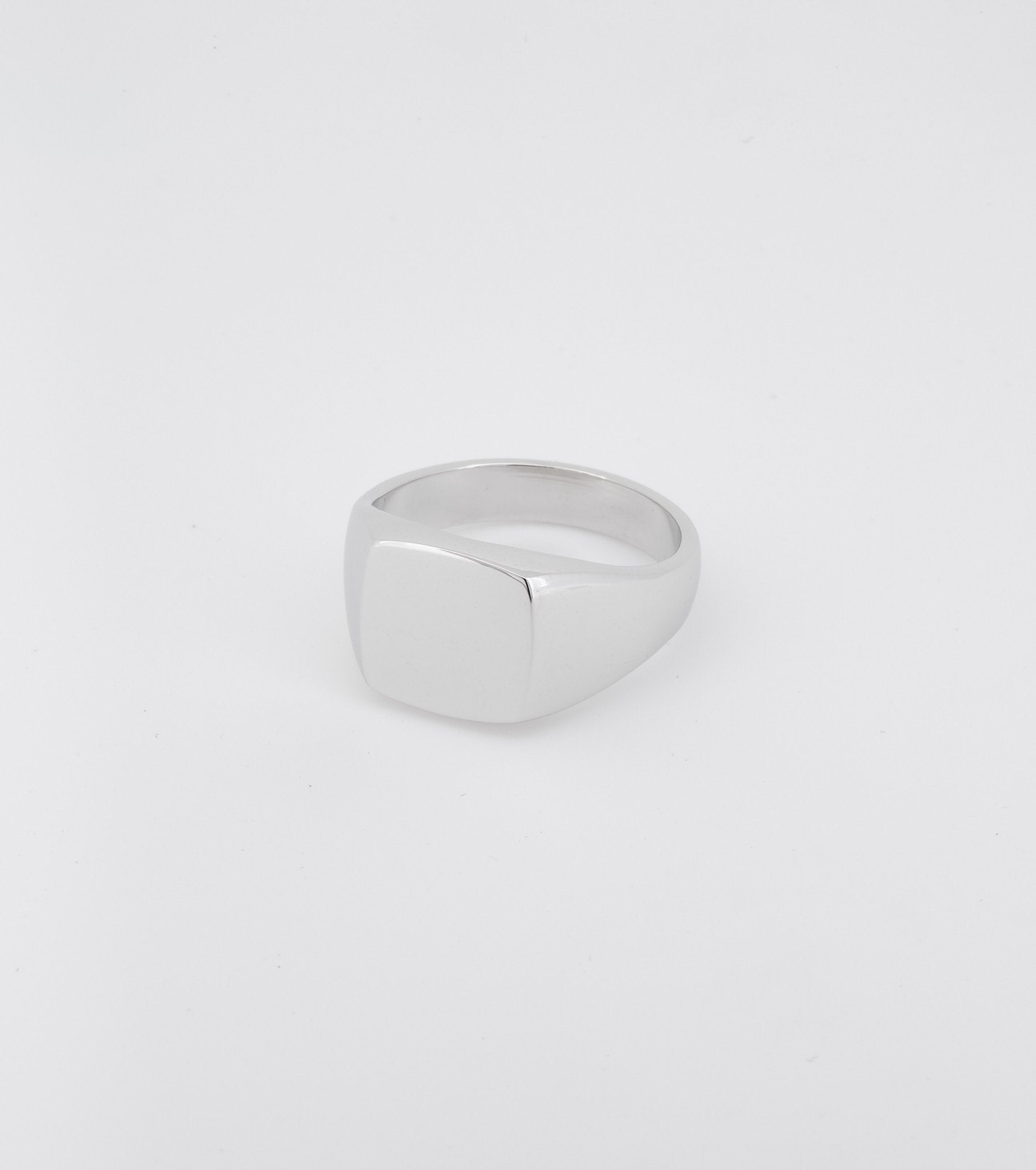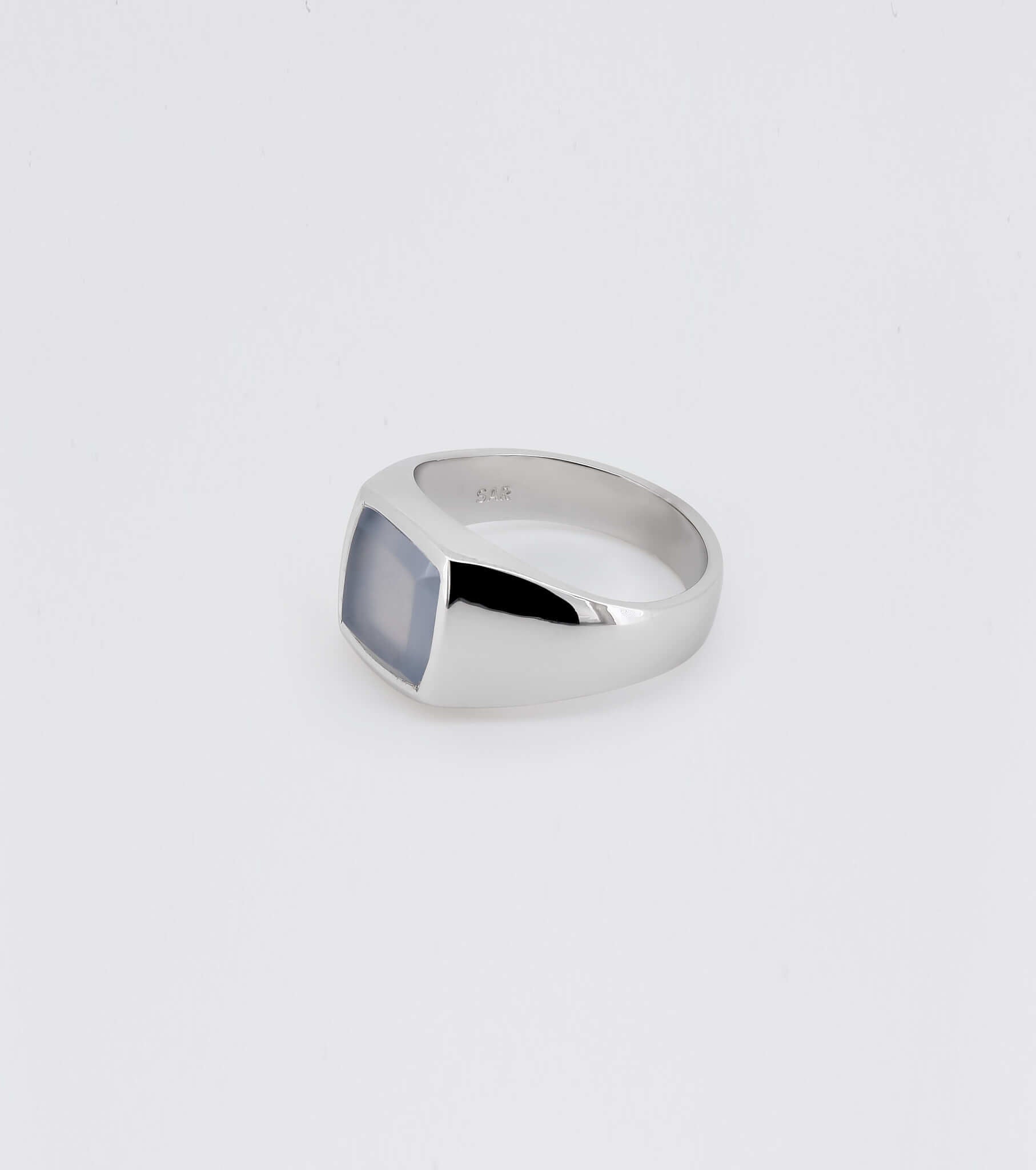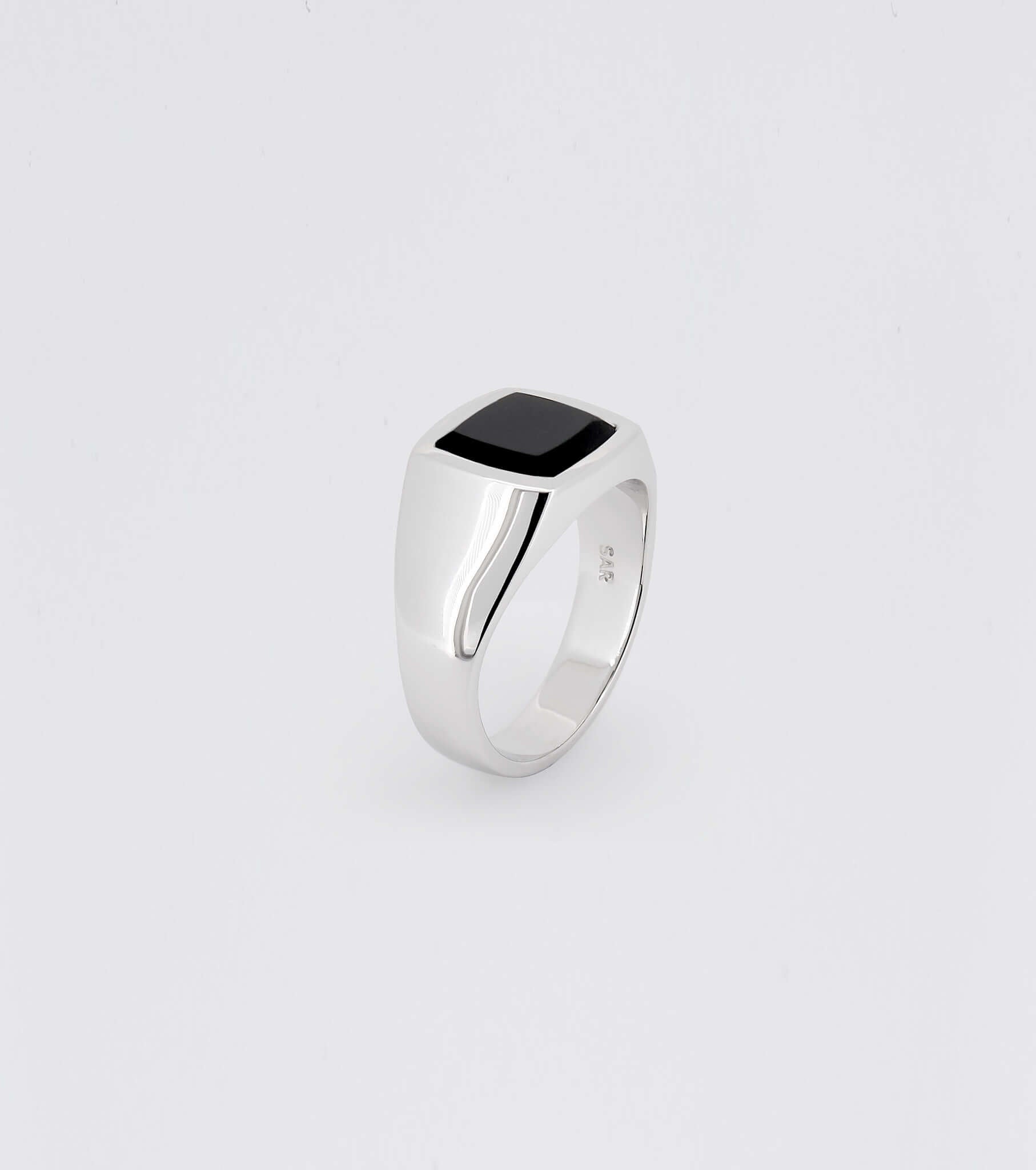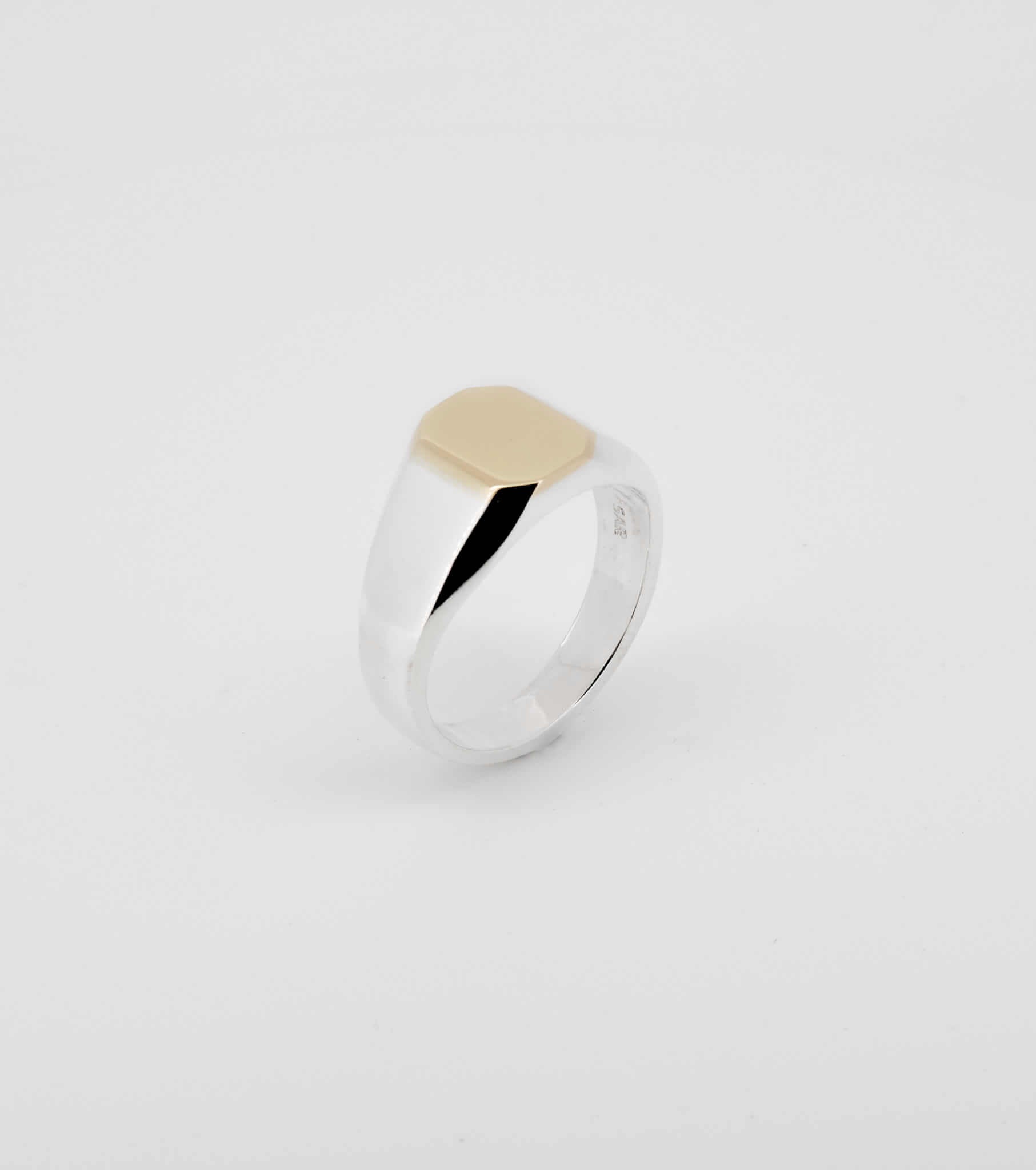Signet (n.) From the Old French ‘signet’ meaning ‘a small seal’, from the Latin ‘Signum’ meaning
Signet Rings are the most enduring style of ring the world has known.
Spanning cultures and countries, they are renowned
for their purpose, as well as their capacity to display personality, status, beliefs and sentiment. They have always been a signifier, right through history from the time of Ancient Egypt, when the cylinder seals of the Mesopotamians were re-imagined into a piece that could be worn.
20th–19th century B.C. Mesopotamia
Throughout history, governments, highborn
families, clergy and monarchies have required the verification of official
documents and letters. From pharaohs to Roman Emperors, exalted religious
members to the kings of Europe signet rings for men became
an invaluable tool to ensure the word of these powerful humans was protected
and that their will was made clear in seals of clay or wax.
ca. mid-2nd millennium B.C. Mesopotamia.
Carnelian.
The materials from which the men’s signet rings were hewn changed through the ages, from iron to bronze to precious metals. With valuable materials came the addition of gemstones, enamels, and human bone and hair. As time wore on, signet rings for men became a piece that
broke free a little of the class system. Those with less could choose a simple bronze or silver piece with a verse inscribed, or wear as a ring of betrothal.

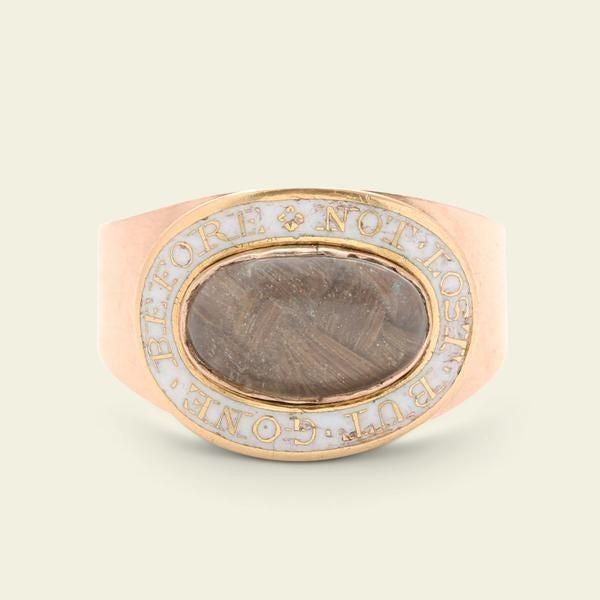
Georgian signets – mid 19th century – Yellow gold, Enamel, quartz and human hair.
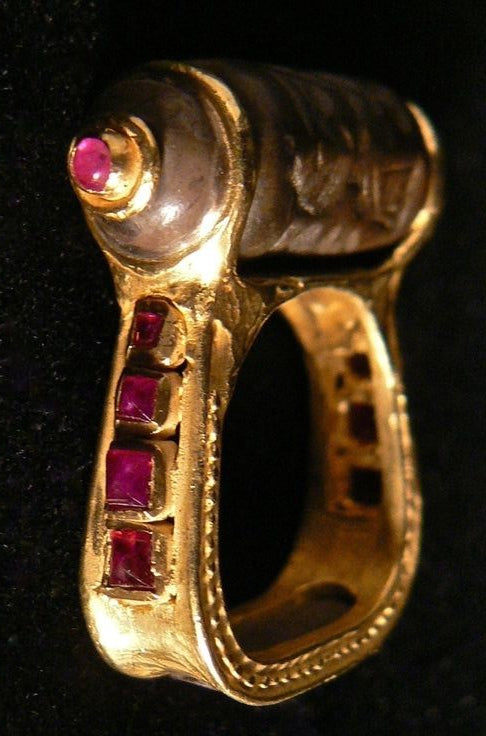
Mesopotamian roll ring with clay
cylinder and rubies Ca. 18th Century B.C.
Throughout history, governments, highborn
families, clergy and monarchies have required the verification of official
documents and letters. From pharaohs to Roman Emperors, exalted religious
members to the kings of Europe signet rings for men became
an invaluable tool to ensure the word of these powerful humans was protected
and that their will was made clear in seals of clay or wax.

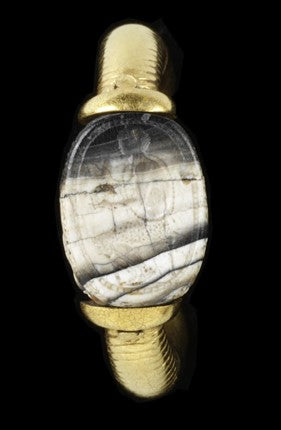
Left-Roman
military ring 3rd century A.D. –Right- Yellow gold and Carnelian – gold and agate signet - Etruscan c. 450-300 BC
Hieroglyphs and Latin Verse
Signet rings were found amongst the treasures in the tombs of pharaohs, who were
laid to rest as early as 1300BC. The
signet bezels were engraved with simple hieroglyphs, sometimes signifying their
throne names, or regal sentiments such as ‘All Egypt is in Adoration’.
The Romans would engrave Latin verse, often
religious in sentiment, or relative to battles fought hard and won. Words of
love and devotion were chosen for rings designed for marriage.
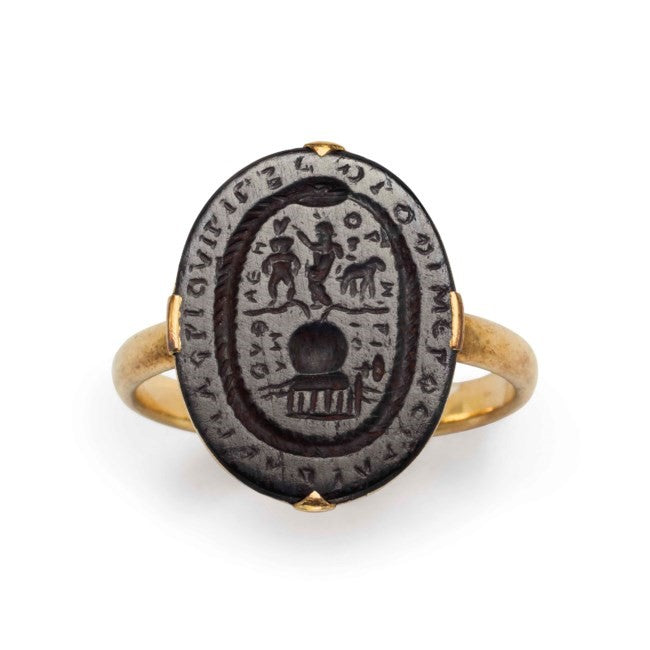
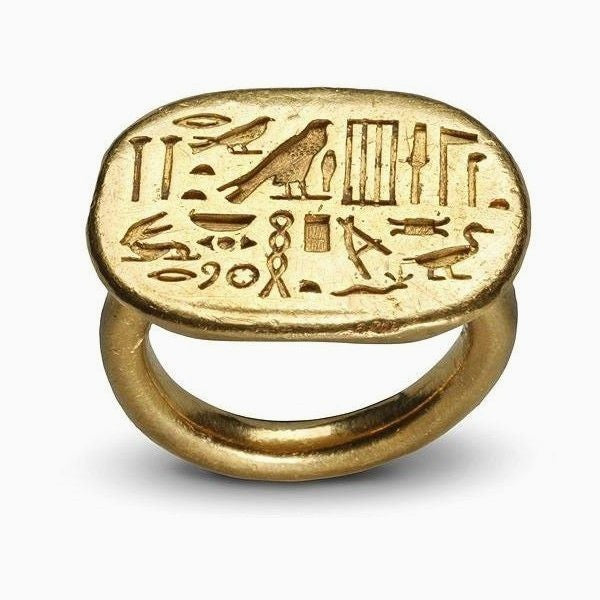
Ancient Egyptian Signet Ring. Made of
solid gold. Late Period, 26th Dynasty, ca. 664-525 BC -
Roman haematite magic gem circa 3rd century ad
Our Vanitas Ring bares the
latin words ‘Omnia Vanitas’ – a wearable reminder that the purpose of life is not to acquire
mindlessly, but to exist present to its moments, and cultivate love.


